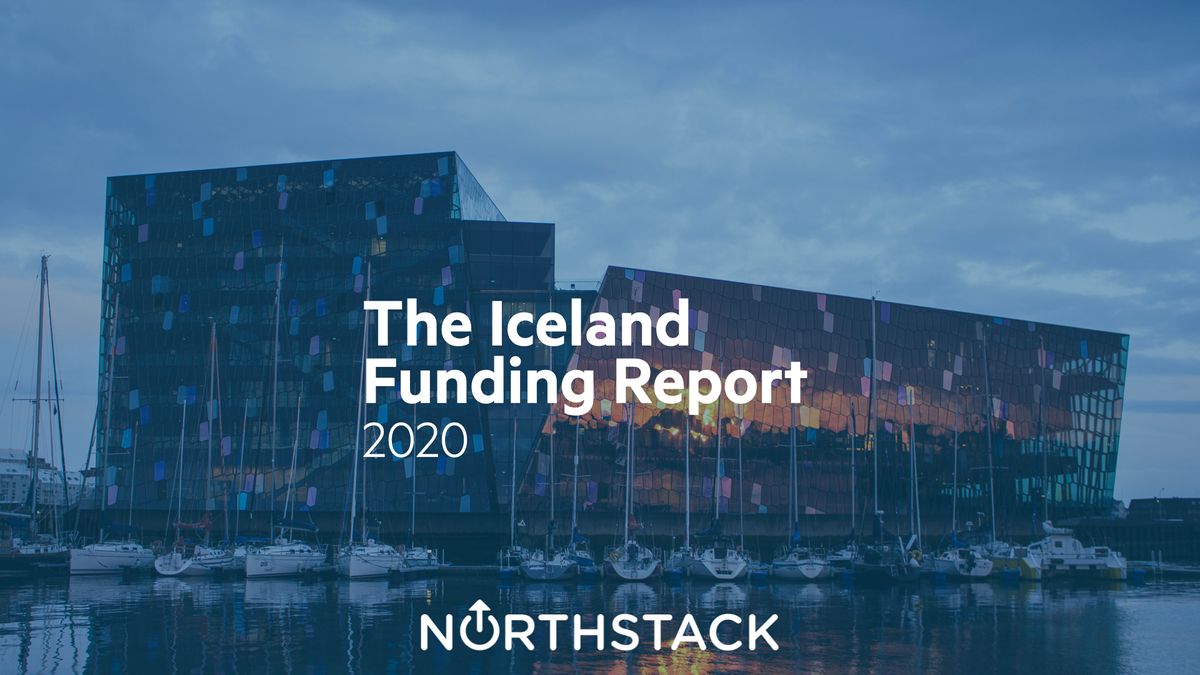Big rounds and big money, but early stage is lacking – The 2020 Funding Report

Another year, another funding report, where we highlight investment data, discuss and (try to) analyse trends as they emerge. As a reminder, here you can find an overview of earlier reports, and for info on methods and data, please see the section at the end of the report.
27 investments tracked, evenly distributed through the year
We’re interested by seasonality – whether one time of year is better for venture and startup funding than others – but over the five years Northstack has been tracking investments, we’ve yet to find any seasonality.

This is true both if we look at the year by quarter (see above) or by halves (see below). No trends have emerged over the years to strongly indicate that one time of year is preferred by our fundraising companies, and although it looked like the first half of the year was starting to become dominant, 2019 and 2020 evened out that distribution.

2+ deals per month is becoming the norm
While we do not see any real indication of seasonality, one data point that we can say with confidence is that the Icelandic ecosystem is announcing on average 2+ deals per month (the average over the last 6 years being exactly that). Please keep in mind that we do not have good data from before the private venture capital funds (Brunnur, Crowberry, Eyrir, Frumtak II) where founded (they all closed in 2015).

2020: The eclipse of big money

The biggest headline by far for 2020 is the massive amount of money deployed into the ecosystem last year. When reporting on the total amount invested, we usually split the “monster rounds” (above $30 million) and others, which explains why the column for 2020 is so much bigger than all the years before. While we’ve had big years before (see below), we’ve never had this much money deployed in funding rounds where each round was $30m or less. This means more companies raised sizable funding rounds in the year, and the data wasn’t totally skewed by one or two massive deals.

When we include the monster rounds, 2020 doesn’t stand out as much in total amount. But the difference is that 2020 saw multiple companies raise big funding rounds, as opposed to multiple smaller ones, and one or two massive ones.
2020: Year of the Icelandic Growth Round
The biggest positive indicator of the year, is the number of rounds we could qualify as “Icelandic growth rounds.” Out of the 26 investments tracked, eight landed in the $10-$30m bucket, which for most Icelandic startups would qualify as a growth investment.
Note: We could get all philosophical and semantic around what is growth funding and what isn’t — based on the actual activity in the Icelandic ecosystem, raising $10m+ would be considered (right now at least) a good amount of money, and a bigger round than usual.

The flipside of this fact is that there was a significant drop in early stage funding: from 20 tracked early rounds in 2019 to 10 tracked in 2020. There are multiple possible reasons for this:
- First off, the Icelandic ecosystem is fairly small, and we’re already seeing indicators that suggest that the ecosystem swings between early stage rounds (2017 and 2019) and later stage (2018 and 2020). The companies that raised in 2017 and grew, are likely to have raised larger rounds in 2018; same is true for 2019 and 2020.
- Most of the local VC’s – who have been a big contributor into early stage financing in Iceland – are tapped out and currently raising. Brunnur and Frumtak 2 did no new investments last year, and Crowberry and Eyrir each did one in Iceland. NSA/New Business Venture Fund did two deals.
- The Covid-19 outbreak likely had some impact, as well as the general economy uncertainty throughout the year.
Exits and the closing of Frumtak 1
Looking at exits and other acquisition activity, we had some movement throughout the year. Sadly (for us that are interested in data) most of the numbers remain undisclosed.
- Marorka was acquired by Gaztransport and Technigaz
- Cybersecurity education platform Adversary was acquired by Secure Code Warrior
- Trackwell was acquired by new private investors from Frumtak
- Frumtak I sold its shares in Controlant
- Main Manager was acquired by View Software (Frumtak I invested in Main Manager)
The main story here is that Frumtak 1 – which was founded in 2008 and started investing in 2009 – is wrapping up, hopefully with some decent results for the rest of the industry.
Notes on method and data
- We report on investments that are reported or public knowledge, and time them based on the official announcement dates (i.e. press releases). This is to maintain integrity between different platforms and years.
- 2020 was an interesting year, because there were – based on public sources – 26 companies that received matching loans from the government as a response to Covid-19. Whether or not these 26 companies all announced their funding rounds and made their way into the funding report is unclear – which companies received the matching isn’t public information. However, it’s unlikely that all of them did announce and were tracked, both because of timing and amounts, and the fact that the program was an emergency program, and not necessarily a funding round the companies want to publicize. It’s therefore likely that the 2020 report underrepresented smaller investments.
- We only count investments into companies that have operations in Iceland (i.e. if Icelandic VC’s invest in companies that are fully abroad, we don’t count those in this report; nor do we track investments into Icelander founded companies that are located abroad).
Subscribe Loading…
Thank you!
You have successfully joined our newsletter list.
function ml_webform_success_6299146() { var $ = ml_jQuery || jQuery; $('.ml-subscribe-form-6299146 .row-success').show(); $('.ml-subscribe-form-6299146 .row-form').hide(); } fetch("https://assets.mailerlite.com/jsonp/292344/forms/93626251316561736/track-view")




